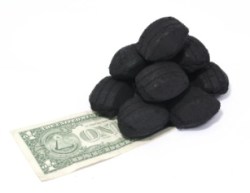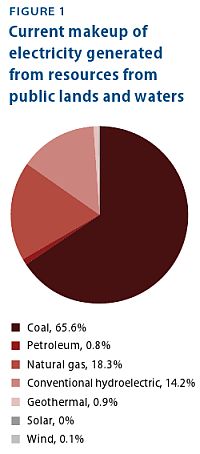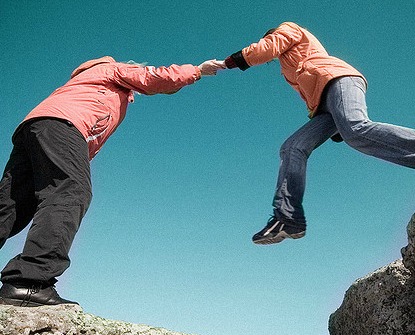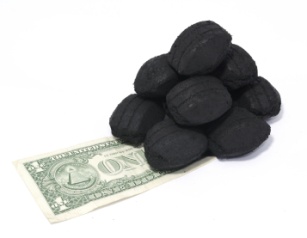 I hope everyone read Joe Smyth’s post about the upcoming “auction” of 721 million tons of publicly owned Powder River Basin (PRB) coal. “Auction” goes in scare quotes because there’s only one bidder: Peabody Coal, which can keep bidding at its leisure until it clears the ridiculously low minimum price established by the Bureau of Land Management (BLM). Peabody, of course, wants to export the coal.
I hope everyone read Joe Smyth’s post about the upcoming “auction” of 721 million tons of publicly owned Powder River Basin (PRB) coal. “Auction” goes in scare quotes because there’s only one bidder: Peabody Coal, which can keep bidding at its leisure until it clears the ridiculously low minimum price established by the Bureau of Land Management (BLM). Peabody, of course, wants to export the coal.
If a one-bidder auction strikes you as shady, you’re not alone. As Juliet Eilperin reports in the Washington Post today, the practice “is being reviewed by the Interior Department’s inspector general and also will be the subject of an audit by the Government Accountability Office.”
There’s a reason only one or two bidders participate in these auctions: Only four big companies are operating in the PRB. They each have their own areas of land. When an adjoining lease opens up, one of them already has the equipment and infrastructure in place, so it will always be able to underbid a company bringing gear in from outside. So nobody bothers to bid against it. Cozy.
The net result is that taxpayers are getting screwed. According to a new report from the Institute for Energy Economics and Financial Analysis, BLM’s non-competitive coal auctions have cost taxpayers “as much as $28.9 billion over the past 30 years.” It has to do with the Powder River basin being “decertified” as a coal-producing region, which is absurd. Read Smyth’s post for more on that.
The larger problem is that BLM is supposed to manage public lands in the best interests of the public, not coal companies, and it’s hard to argue that accelerating climate change by sending cheap coal overseas is in America’s best interests.

The Center for American Progress (CAP) has a must-read report out on this today called “Using Public Lands for the Public Good.” It finds that, of the electricity generated by land and resources in the public estate, some 66 percent comes from coal. Coal, they say, “is the de facto priority for the use of the federal estate when it comes to power generation.” Just 1 percent of public land is used for wind and solar. What’s worse, projecting out 20 years shows no major change in the situation. (Coal goes down to about 57 percent.)
That does not comport with Obama’s much-ballyhooed vision of a clean energy future. Nor, given what we know about coal’s health and environmental impacts, does it comport with good sense or the national interest.
CAP’s primary policy recommendation is that …
… a “clean resources standard,” or CRS, for public lands and waters be implemented by executive order. This would require land management agencies to delineate what portion of publicly owned natural resources used for electricity generation will be clean and renewable — from wind, solar, geothermal, biomass, and small hydro-electricity. We recommend the entirely achievable target of 35 percent renewable electricity from public lands and waters by 2035.
In addition, they recommend:
• Put a carbon price on coal mined on public lands
• Reform the leasing process for coal mined on public lands to achieve fair-market value
• Establish renewable energy zones on public lands and waters
• Include public lands and waters in the executive order on sustainability to better track the government’s carbon pollution
• Ensure that all federal environmental analyses include scientific carbon pollution studies
That all sounds about right to me.
When it comes to the federal government’s relationship with energy, a lot of attention gets focused on loan guarantee programs and tax credits and the like. But it’s time climate hawks clued in to the fact that the feds — that is to say, we, collectively — own a sh*tload of land and resources, much of which can be used for energy. Among other things, this land we own provides 43.2 percent of the nation’s coal. Not only do we offer this coal up, but we practically beg coal companies to mine it, offering them “billions of dollars in taxpayer subsidies via preferential tax treatments such as the ability to expense exploration and development costs, tax deductions to cover the costs of investments in mines, and favorable capital gains treatment on royalties.”
Why are we doing that? We know more than we used to about the damage done by coal mining and combustion. We know more than we used to about the dangers of climate change. There’s no excuse any more for us to allow our common heritage to be used in a way that hurts Americans, the planet, and future generations.




